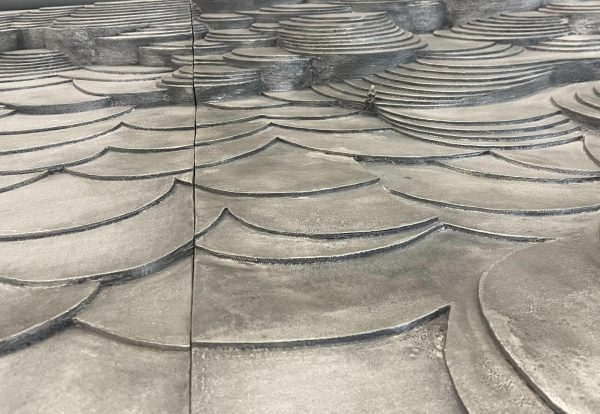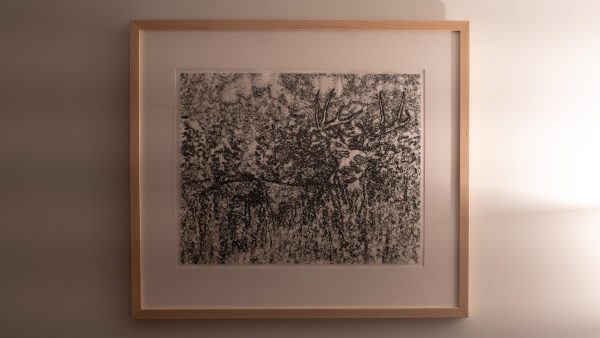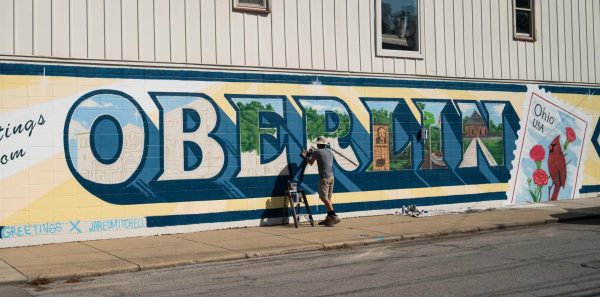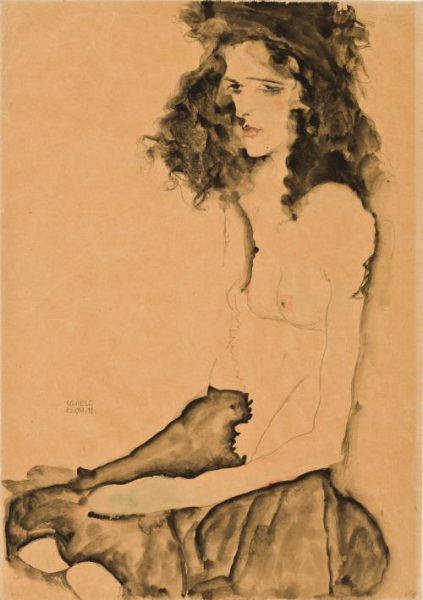“Lines of Inquiry” Showcases Rembrandt’s Technique, Breadth of Etchings
A spectacular selection of Rembrandt’s work stars at the Allen Memorial Art Museum in Lines of Inquiry: Learning from Rembrandt’s Etchings. The new exhibition, which opened Tuesday, was curated in collaboration with Cornell University’s Herbert F. Johnson Museum of Art, which hosted it last semester. Along with displaying examples of Rembrandt’s innovative printmaking, the selection also explores Oberlin’s personal history with these works, current digital projects, and innovations that are facilitating access to the works.
Immediately upon walking into the AMAM, visitors are greeted by a video that introduces various 17th-century processes for papermaking, etching, watermarking, and printing that Rembrandt used to create his art. These explanations are a helpful introduction to Rembrandt’s famously technical etchings and allow viewers to explore the detail in the prints more deeply. There is also an interface that offers an introduction to the Watermarks in Rembrandt’s Etchings Project, an interface created from a collaboration between Cornell’s university museum and their electrical engineering department that attempts to simplify the process of confidently identifying watermarks in Rembrandt’s etchings. The hope is that this project will help reveal Rembrandt’s printing practices and allow for more accurate dating of his prints.
“Rembrant prints still today — almost 400 years old, in some cases — they still remain resonant, and they still remain relevant from all different avenues of inquiry,” said AMAM Curator of European and American Art Andaleeb Banta. “Be it you’re interested in the artistic aspect, or the aesthetic aspect, but they’re also wonderful historical documents. They are also materially really fascinating. The video and the touch screen explain the concept of watermark scholarship in Rembrandt prints.”
The exhibition proper is housed in the John N. Stern Gallery and features a great breadth of Rembrandt’s work, including landscapes, portraits, self-portraits, study plates, etchings of pastoral and mythological lovers, religious subjects, and vignettes of everyday life. Some of the prints are so small and intricate that they are best viewed with a magnifying glass.
“He’s such an interesting artist and printmaking is a specific kind of technique, etching is a specific kind of technique,” Banta said. “On top of that he was particularly masterful in his etching technique, so there’s a lot of layers for us to explore.”
Lines of Inquiry already proves popular with the campus community.
“I really like Rembrandt’s crosshatching,” College sophomore Kai Basler-Chang said. “I remember in art how difficult it is, and he does it so well.”
Banta spoke to how the collaborative exhibition evolved to reach its current state and how she hopes that Rembrandt’s recognized fame will draw visitors to the museum this semester.
“It was a project that took on different forms before settling on this one, which is focusing on Rembrandt prints in academic museum collections,” Banta said. “Almost all the loans that have come to us have come from academic museums. … There are certain things you would want in your collection, and a Rembrandt print is one of them.”
Although Rembrandt remains popular and resonant in museum collections worldwide to this day, Oberlin in particular has a unique historical connection to the Dutch master’s work. During World War II, Oberlin housed the New York Morgan Library’s extensive Rembrandt print collections for two years.
“There was a deep fear that New York might be bombed during the war, and that great treasures would go up in smoke, so the Morgan — along with other north East Coast museums — actually worked with museums located more in the interior to house certain things for them. So that story was kind of the kernel of the exhibition, but then we thought there’s more to tell. That story is here. … But we expanded it to explore this idea of Rembrandt prints in academic museums, and how they have played a really important role for a long period of time in academic museums.”
Along with Lines of Inquiry, two other new exhibitions are being hosted in the AMAM this semester: Handle with Care: Embracing Fragility and A Century of Asian Art at Oberlin: Japanese Prints.
Handle with Care was organized by Olivia Fountain, OC ’17, a curatorial assistant in the AMAM’s Office of Academic Programs. For Fountain, one important aspect of these exhibitions is their integration into other parts of the campus community.
“I’m really excited to see these exhibits integrated into classes,” Fountain said. “[Handle with Care] is very applicable today.”
Handle with Care raises questions about what and who is deemed “fragile” in certain contexts, and why. The works included feature only contemporary artists, which Fountain said serves to “create a space for living artists.”
A Century of Asian Art at Oberlin features a selection of the AMAM’s extensive collection of Japanese prints. These prints, whose origins span over 400 years, provide a glimpse at evolutions in Japanese art.
“By happy coincidence, major donations of Japanese prints to the AMAM have roughly paralleled major movements in Japanese printmaking from the 18th to the 20th centuries,” wrote Kevin Greenwood, Joan L. Danforth Curator of Asian Art. “This exhibition presents works by master printmakers from a variety of periods — a dual chronicle of this printmaking history and the growth of the museum’s collection.”
Lines of Inquiry will remain in the Stern gallery until May 13, while both Handle with Care and A Century of Asian Art at Oberlin will be available for viewing until July.









